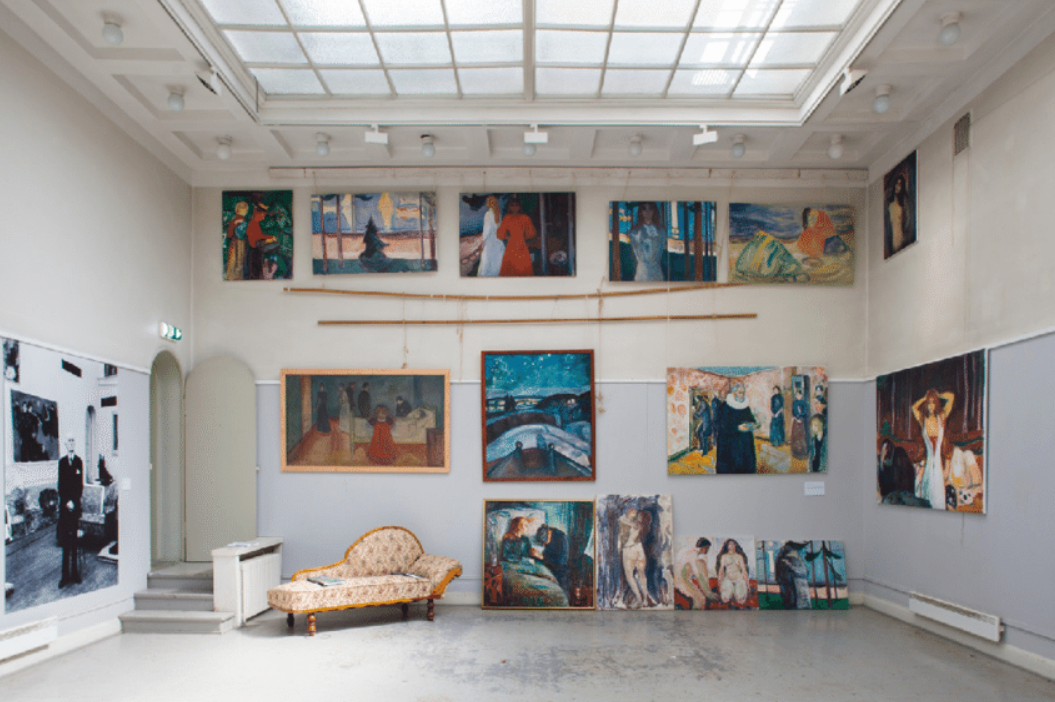Expressionism, a diverse and influential art movement, aimed to express emotions and inner experiences rather than depict physical reality.
Expressionist painters are diverse and influential, including artists like Edvard Munch, Wassily Kandinsky, Egon Schiele, Franz Marc, and more. They express emotions, interpret reality, and use bold colors and brushwork to record their human experience.
From Van Gogh to Kandinsky, here are 20 iconic paintings that capture the evocative and dynamic nature of Expressionism.
"The Scream" (1893) by Edvard Munch:
One of the most recognizable artworks in the world, "The Scream" embodies the profound sense of angst and anxiety prevalent in the early modernist era.
"The Dessert: Harmony in Red" (1908) by Henri Matisse:
Henri Matisse's vibrant and abstract painting showcases his exploration of color and form, expressing harmony through bold brushstrokes.
"The Blue Rider" (1903) by Wassily Kandinsky:
Wassily Kandinsky, a pioneer of abstraction, created "The Blue Rider," showcasing his shift from impressionism to expressionism and inviting varied interpretations.
"Dance Around the Golden Calf" (1910) by Emil Nolde:
Emil Nolde's dynamic and emotionally charged painting depicts a scene from the Old Testament, emphasizing the heightened emotions of the figures involved.
"The Large Blue Horses" (1911) by Franz Marc:
Franz Marc's vibrant use of color and cubist-inspired style in "The Large Blue Horses" conveys a sense of harmony and balance while exploring spirituality.
"Self-Portrait with Chinese Lantern Plant" (1912) by Egon Schiele:
Egon Schiele's introspective self-portrait captures the tension and psychological depth through distorted proportions and intense facial expression.
"Street, Berlin" (1913) by Ernst Ludwig Kirchner:
Ernst Ludwig Kirchner's "Street, Berlin" depicts the alienation and disorientation of modern urban life through its sharp angles and contrasting colors.
"The Night" (1918-19) by Max Beckmann:
Max Beckmann's unsettling masterpiece, "The Night," reflects the chaos and violence of postwar Germany, challenging societal norms and moral hypocrisy.
"Reclining Nude" (1919) by Amedeo Modigliani:
Amedeo Modigliani's sensual portrayal of a reclining nude embodies his distinctive style characterized by elongated forms and blank facial expressions.
"Portrait of a Man" (1919) by Erich Heckel:
Erich Heckel's painted woodcut composition captures the postwar anxiety and insecurity, evoking a sense of defeat and anticipation.
"Castle and Sun" (1928) by Paul Klee:
Paul Klee's "Castle and Sun" is a vibrant and geometrically abstract painting that invites viewers to interpret its ambiguous imagery and color blocks.
"Self Portrait as a Soldier" (1915) by Ernst Ludwig Kirchner:
Ernst Ludwig Kirchner's "The Bridge" is a bold and energetic painting that reflects the spirit of the Die Brücke group, emphasizing raw emotions and rejecting societal norms.
"Portrait of Adele Bloch-Bauer I" (1907) by Gustav Klimt:
Gustav Klimt's iconic portrait showcases his ornate and decorative style, capturing the essence of Vienna's fin-de-siècle society and its artistic flourishing.
"Woman with Dead Child" (1903) by Käthe Kollwitz:
Käthe Kollwitz's poignant and emotionally charged artwork depicts the anguish and grief of a mother holding her lifeless child, a powerful commentary on the horrors of war and loss.
"Composition VII" (1913) by Wassily Kandinsky:
Wassily Kandinsky's abstract masterpiece, "Composition VII," embodies the spiritual and emotional qualities of his art, with vibrant colors and dynamic forms.
"The Street Enters the House" (1911) by Robert Delaunay:
Robert Delaunay's colorful and fragmented composition represents the urban experience, exploring the intersection between architecture and human presence.
"The Little Blue Horse" (1912) by Franz Marc:
Franz Marc's "The Little Blue Horse" is a vibrant and expressive artwork that captures the essence of his animal motifs, evoking a sense of spiritual connection with nature.
"Die Brücke" (1910) by Karl Schmidt-Rottluff:
Karl Schmidt-Rottluff's painting depicts the members of the Die Brücke group, symbolizing their artistic unity and shared vision for expressing raw emotions through art.
"The Sunflower" (1906) by Egon Schiele:
Egon Schiele's intense and distorted depiction of a sunflower showcases his unique style and ability to convey inner emotions through vibrant colors and expressive brushwork.
"The Virgin" (1913) by Edvard Munch:
Gustav Klimt's evocative painting of "The Virgin" or "The Maiden" explores themes of sexuality, innocence, and spirituality, creating a deeply introspective and enigmatic composition.

Drawbridge with Carriage, Vincent van Gogh, 1888
Explore our curated selection of contemporary artists from around the globe.
Naturalist Gallery offers artist representation internationally. Apply your art.
These iconic paintings, created by artists from various countries and movements, exemplify the diverse and profound impact of Expressionism on the art world. Through their use of bold colors, expressive brushwork, and raw emotional expression, these artworks continue to resonate with audiences, inviting contemplation and reflection on the human experience.

The Potato-Eaters, Vincent van Gogh, 1885
You may also find the following articles helpful:
The Most Iconic Abstract Artworks of the Last Century

